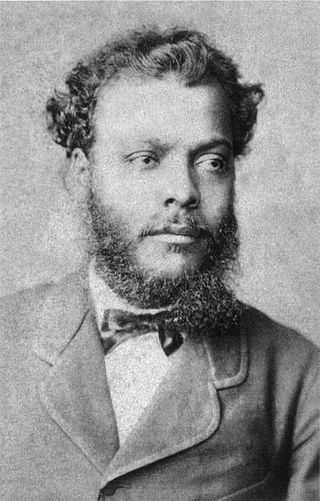
Mackenzie Presbyterian University is a private university in São Paulo, Brazil.

The Cathedral Basilica of Salvador, officially dedicated to the Transfiguration of Christ and named Primatial Cathedral Basilica of the Transfiguration of the Lord is the seat of the Archbishop of the city of Salvador, in the State of Bahia, in Brazil. The Archbishop of Salvador is also ex officioPrimate of Brazil. The structure was built by the Society of Jesus as part of a large Jesuit monastic and educational complex. The current church is the built on the site, and was consecrated in 1654. After the expulsion of the Jesuits from Brazil in 1759 the school and church were transferred to the Archbishopric of Bahia. Archbishop Augusto Álvaro da Silva ordered the demolition of the existing cathedral of Salvador in 1933 to construct a tram line, and elevated the existing Jesuit structure to the status of basilica.

Ashbel Green Simonton was an American Presbyterian minister, and the first missionary to settle a Protestant church in Brazil, Igreja Presbiteriana do Brasil, which translates as Presbyterian Church of Brazil.

The Roman Catholic Metropolitan Archdiocese of Aracaju is a Latin Metropolitan archdiocese in the State of Sergipe, northeastern Brazil. Its cathedral archiepiscopal see is Our Lady of the Conception Cathedral, dedicated to Our Lady of Immaculate Conception, in the city of Aracaju. Two World Heritage Sites are owned by the Archdiocese in São Cristóvão, Sergipe: the Misericórdia Hospital and Church and the Church and Convent of Santa Cruz, also known as the Church and Convent of Saint Francis.

The Roman Catholic Archdiocese of Belo Horizonte is a Latin Church ecclesiastical territory, or archdiocese, of the Catholic Church located in the state of Minas Gerais, Brazil's second-most populous state.

José Carlos do Patrocínio was a Brazilian writer, journalist, activist, orator and pharmacist. He was among the most well-known proponents of the abolition of slavery in Brazil, and known as "Tigre da Abolição". He founded and occupied the 21st chair of the Brazilian Academy of Letters from 1897 until his death in 1905.

The Presbyterian Church of Brazil is an Evangelical Protestant Christian denomination in Brazil. It is the largest Presbyterian denomination in the country, having an estimate 702,949 members, 4,915 ordained ministers and 5,420 churches and parishes. It is also the only Presbyterian denomination in Brazil present in all 26 States and the Federal District.

The Independent Presbyterian Church of Brazil is a Mainline Protestant Christian denomination in Brazil. Part of the Reformed family of Protestantism, it is the second oldest Presbyterian denomination in the country, had an estimated 74.224 members, 693 ordained ministers and 510 churches in 2009. In 2012 the church had more than 85,000 members and 546 congregations. It was founded by Brazilian minister Rev. Eduardo Carlos Pereira and a group of six other ministers and their churches, who split from the Presbyterian Church of Brazil over a number of political and ecclesiastical controversies.

The Presbyterian Church in Angola is a federation of theologically orthodox Reformed churches, that was founded in the mid-1980s, adopting the Westminster Confession of Faith as the official Standards.

Rev. Alexander Latimer Blackford was an American Presbyterian missionary in Brazil born on January 9, 1829, in Martins Ferry, Ohio.

The Cemitério dos Protestantes is a historic Protestant cemetery located in the city of São Paulo, Brazil. The cemetery is listed by CONDEPHAAT for its historical, cultural and social importance for the state of São Paulo.

Events in the year 1905 in Brazil.

Events in the year 1967 in Brazil.

Events in the year 1951 in Brazil.

Events in the year 1999 in Brazil.

The Our Lady of Glory Cathedral Also Valença Cathedral Is the name given to a religious building that is part of the Catholic Church and is located in the center of the city of Valença in the state of Rio de Janeiro in the southern part of the South American country of Brazil.
















